Investing in Your 60s and Beyond
Insights from experienced financial professionals.
Once you are in your 60s, you are likely to focus less on growing your retirement funds than answering, "When do I retire?" And once you crack open your nest egg, how should you allocate its contents? The answer often lies in a substantial shift in your investment strategy. Here are some ideas for investing in your 60s and beyond.
Preliminary Questions
Before you settle on a plan, you need to be able to answer a few questions. These include:
- How long do you need your savings to last, and how long are you likely to live?
- How many years might you be in retirement?
- What are your expected annual expenses in retirement?
- What is your non-invested income, such as pensions, Social Security, and annuity payments?
By having an idea of how much you need in retirement and how much income you may expect to receive outside of your investments, you then calculate how much you need to withdraw from your retirement funds.
Allocating Your Retirement Assets
Everyone's safety threshold is different—but most people appreciate having a balanced portfolio of CDs and high-yield savings accounts with stock holdings. However, a too-conservative portfolio may not earn enough to outpace inflation, while a too-aggressive portfolio might leave you vulnerable to sudden market drops.
There are a few different ways to approach this. One of the most popular ones is the "glide path" strategy.1 Subtract your age from 100, and that is the proportion of assets you should have in stocks. So, for example, a 40-year-old would want at least 60% of their portfolio in stocks; a 70-year-old would want no more than 30% of their portfolio in stocks. The remainder of the portfolio's allocations might be to bonds, CDs, money-market accounts, or other assets.
Planning Withdrawals from Your Accounts
Once you become a certain age, you are subject to the required minimum distributions (RMDs).2 These are annual minimum distributions you must take from a traditional individual retirement account (IRA) and 401(k) plans. The Secure Act 2.0 increases the age that RMDs begin to age 73 for individuals who turn 72 on or after January 1, 2023. Also, a person who is 72 in 2023 is not required to take an RMD for 2023. Because RMDs increase your taxable income, many approaching 73 might benefit from working with a financial professional to manage their tax liability or reallocate withdrawals into other accounts.
But before RMDs become an issue, you may still need to make regular cash withdrawals from your retirement accounts. Some accomplish this by withdrawing a flat 3% of their initial balance each year, adjusting for inflation. Depending on the investments in the portfolio, these modest withdrawals may maintain or permit your portfolio to grow from year to year.
Whatever system you choose, it is important to be consistent. However, if a particular method is not working for you, switching to something that does is fine. A financial professional may help you evaluate where you are, discuss your goals and expectations, and design a plan to help manage resources.
Important Disclosures:
The opinions voiced in this material are for general information only and are not intended to provide specific advice or recommendations for any individual. To determine which investment(s) may be appropriate for you, consult your financial professional prior to investing.
Investing involves risks including possible loss of principal. No investment strategy or risk management technique can guarantee return or eliminate risk in all market environments.
This information is not intended to be a substitute for specific individualized tax advice. We suggest that you discuss your specific tax issues with a qualified tax advisor.
All information is believed to be from reliable sources; however LPL Financial makes no representation as to its completeness or accuracy.
This article was prepared by WriterAccess.
LPL Tracking #1-05361931
Footnotes
1 Glide Path
https://corporatefinanceinstitute.com/resources/wealth-management/glide-path
2 Retirement Plan and IRA Required Minimum Distributions
https://www.investopedia.com/secure-2-0-definition-5225115


